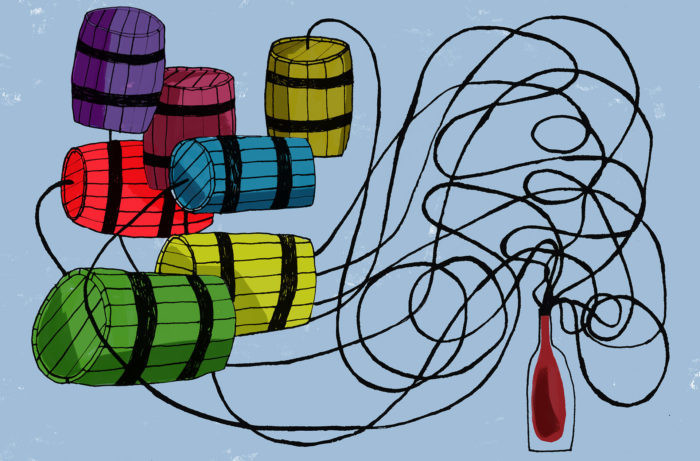Wine Enthusiast
June 13, 2018
The majority of the wines you drink are blends, but why do winemakers blend and what does each variety bring to the final wine? Washington State winemakers tell us their tricks.
“I love blending,” says Ben Smith co-owner Cadence Winery. “It’s one of the two times a year—along with harvest—I actually feel like I’m making wine.”
Almost all wines are blends of some sort. Some might be a blend of different barrels, vineyards or blocks of a single variety. Others might be a blend of different appellations or varieties.
But why do winemakers blend?
“The art of blending, to me, is to take individual pieces and make the sum of what you’re blending better than those individual pieces you started out with,” says Mike Macmorran, winemaker, of Mark Ryan Winery.
Once grapes are in the winery during harvest, winemakers immediately start evaluating what they have, tasting first each fermenter and then barrel, keeping notes, rating and ranking along the way.
“I start building a map,” says Kevin White, proprietor and winemaker of Kevin White Winery. “I know this combination may work well because I’ve got earthiness here and bright fruit here and structure there and I’m going to get spice here. Five times out of ten, it was interesting in theory but didn’t work out, but the other five times it can be kind of interesting.”
The point at which winemakers decide to start blending varies. “I actually feel like the earlier you can get the wines blended, the more complexity you’re going to have in a youthful wine,” says White. He prefers to blend some of his wines immediately after fermentation is complete, while others he blends six months after harvest.
Others start much later. Macmorran typically blends wines 14 months after harvest. “It gives you more opportunity to taste the wines longer as an individual part,” he says.
Once winemakers start blending, they pull samples from a selection of barrels, and out come the pipettes and graduated cylinders, with winemakers often making 100 milliliter sample blends.
Many winemakers will start by making what is referred to as a ‘base blend,’ which will be the foundation of the wine.
“If I’m starting with our Cabernet-based blend, I’ll put together a really good Cab blend which will end up being 60–65% of the final wine,” says Brian Carter, winemaker and managing partner, of Brian Carter Cellars. “Then I look at increasing complexity and increasing balance by adding other varieties. If I add too many other things that it no longer tastes like Cabernet, then I’ve gone too far.”>>>Read the entire article on Wine Enthusiast
